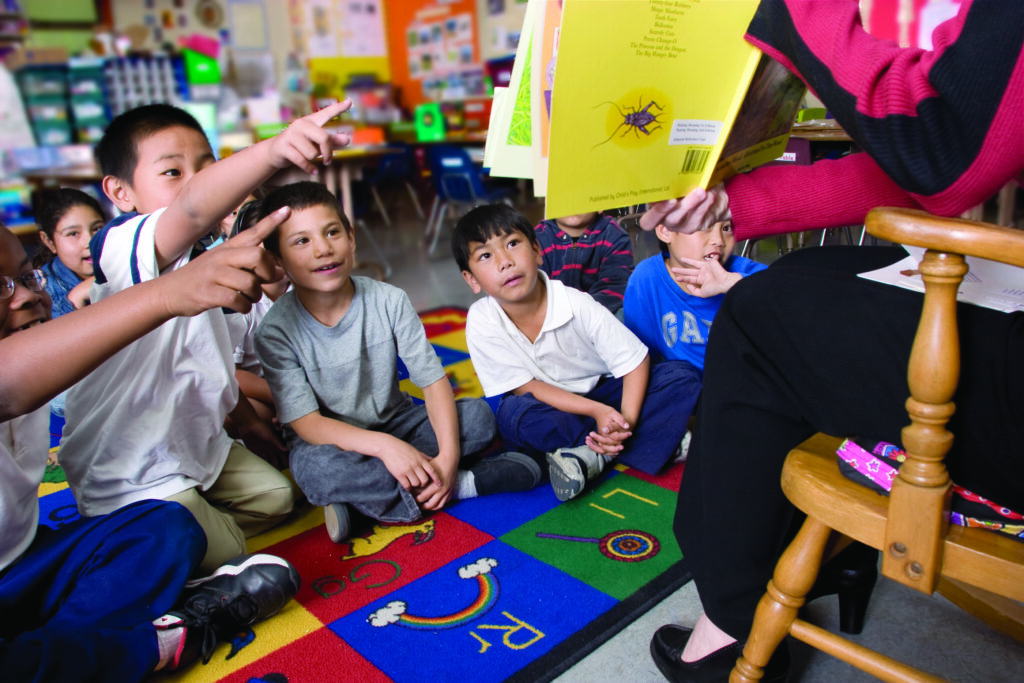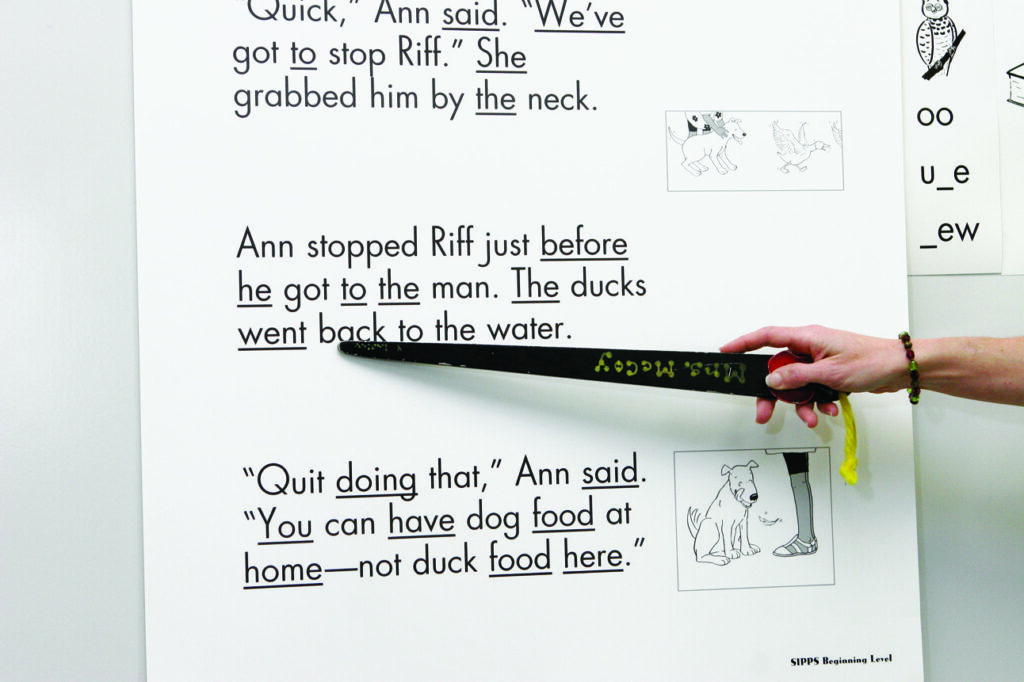How do we achieve and sustain real change in reading instruction?
In the introduction to this Structured Literacy series, I shared my own journey of change as a teacher of reading, as well as the instructional shifts I supported later as a district literacy leader. For me, a lasting insight is this: making significant changes in educator practice requires continuous, focused effort. We must be committed to ongoing and intentional learning, practice, and reflection. Change is hard work.
Soberingly, achieving the change is only half the battle. The same amount of effort we put into making a shift in our teaching practice often must be put in yet again as we work to sustain that change in ourselves—and as we support the same instructional shifts for our colleagues.
When we think about the challenges of change around reading instruction—both at the individual level, as well as systemic issues—the work necessary to bring effective, research-based reading instruction to all students can feel overwhelming. But thankfully the more of us there are working for change, the easier the work will become. And when we feel weak individually, we can lean on our collective strength until our spirits are renewed.
I am deeply grateful for the voices who joined together for this blog series, which concludes with this eloquent reflection by CORE Learning cofounder and former president Linda Diamond. May we continue to learn with and from each other. And may we celebrate every hard-won change—even if it’s in one classroom, one school, or one district—knowing the collective good that will come of our individual efforts. —Kim Still
For over 26 years as founder and then president of CORE Learning prior to retiring, I experienced at least four of the five stages of grief when it came to changing teacher practice: denial, anger, bargaining, and depression. Fortunately, I never got to acceptance.
At CORE Learning our job was and remains, with the excellent folks who continue the work, to change teacher practice. But I admit it was at times daunting. In many cases, the professional learning we provided educators would be transformative, and student achievement improved.
But all too often new administrators would arrive and dismantle the hard work that had been accomplished. Frequently, new materials appeared that were contrary to the science of reading but had the blessing of the district and site administrators.
Equally problematic, new educators, fresh from university preparation programs that embraced popular, unproven approaches, often brought with them methods that were contrary to what we know works.
Even if new teachers came from strong teacher preparation programs, grounded in the science of reading, the school culture that embraced other approaches made it difficult if not impossible for these young teachers to continue with the methods they knew to be effective.
Finally, professional development often guided teachers to use ineffective and disproven methods to teach reading.
What Needs to Change?
So what needs to change to ensure all teachers are equipped with the knowledge and skills to effectively teach all students to read? I have identified four main factors that impede progress in the teaching of reading:
- Teacher preparation programs
- School culture including administrator knowledge and support
- Published curriculum materials
- Professional development

The Impact of Teacher Preparation Programs on Reading Instruction
In 2020 when the National Council on Teacher Quality (NCTQ) published its review of teacher preparation programs in early reading instruction, about 51% of the 1000 institutional university programs they studied earned an A or B grade. However, this result meant that half of the university preparation programs for elementary teachers did not measure up.
Given the bleak picture the 2018 National Assessment of Educational Progress (NAEP) data reveal, NCTQ has undertaken to revise the standard against which university teacher preparation programs are measured. They provide the following rationale for revising their early reading standard:
“Given the persistence of teacher preparation programs not teaching the science of reading and the compelling need to provide programs with more explicit feedback on how to improve, it is time for NCTQ to update its evaluation processes to raise the bar regarding what elementary teachers should learn about the science of reading.”
We must improve all elementary teacher preparation programs to ensure new teachers know the science of reading. California, the state where I live, recently passed SB 488 which requires the Commission on Teacher Credentialing to certify that higher education preparation programs include specific instruction in the content consistent with the science of reading. Other states have moved forward as well.
How School Culture and Administrator Knowledge Affect the Teaching of Reading
CORE Learning worked in many schools where methods contrary to the science of reading, coupled with inadequate instructional materials, were evident. Popular articles or even dictates from central offices and site administrators at times perpetuated the use of ineffective practices and materials. Even in the face of poor student performance, some districts persisted with instruction not grounded in the evidence.
Even in the face of poor student performance, some districts persisted with instruction not grounded in the evidence.
Often after a CORE Learning-provided professional learning experience, teachers not only expressed appreciation but wondered why they had not learned this information previously. For confirmation, just look at the number of participants in the Facebook group The Science of Reading – What I Should Have Learned in College.
Of course, this lack of information affects a school culture, and even teachers with the best of intentions will find it difficult to persist when everyone else is following methods that are inconsistent with the research evidence. When district office leaders and/or site administrators mandate specific methods, resources, and professional learning inconsistent with the science of reading, what is a teacher to do?
Unfortunately, if administrators do not know the large body of science about the teaching of reading, they cannot then be expected to provide appropriate guidance to their staff. Administrators at all levels deserve to have the knowledge about the science of reading so they become instructional leaders that ensure all children at their schools learn to read.
The Impact of Published Curriculum Materials on Reading Instruction
The truth is published curriculum materials have an outsized impact on how teachers instruct. When the only tools available are inadequate at best and wrong at worst, what does a teacher use?
Some publishers cater to popular ideas and appeal on the basis of appearance of materials. Some even bring in reading experts but may not follow their guidance. Until publishers of reading curricula truly design materials grounded in the science of reading and in the research on learning, teachers will be captive to weak materials that hamper their best efforts.

How Professional Learning Affects the Teaching of Reading
Let’s say you have participated in a professional development session on the science of reading, something like the LETRS® course, but then two weeks later you attend a workshop sponsored by your district on guided reading and leveled texts.
Suddenly you are confused because you do not know whom to trust and what is right. And to compound the difficulty, your school brings in materials that are in conflict with the research evidence about teaching reading.
It is vitally important that any professional learning that teachers receive is consistent with the large body of evidence known as the science of reading and that teachers have ongoing coaching and support to implement effective reading instruction.
Conclusion
While these four impediments remain significant, I am convinced we are making progress. In its report, A Nation of Readers, the Council of Chief State School Officers noted that more and more states are passing legislation requiring or recommending evidence-based or science of reading professional learning for teachers and aligned instruction and materials.
If higher education institutions, curriculum publishers, school and district administrators, and professional learning providers all join together, we can ensure that all our children receive the quality, research-based instruction they deserve to become strong readers, and their teachers will have the knowledge, skills, support, and materials to do the job they fervently want to do.
***
To learn more about this blog series, Structured Literacy: Unpacking Nine Key Topics for Transforming Reading Instruction and Outcomes for Readers, read the introduction, From Guided Reading to a Structured-Literacy Approach: My Journey as an Educator, by series lead author Kim Still.
References
NCTQ. (2022). Teacher Prep Review: Reading Foundations Standard Revision. National Council on Teacher Quality. Washington, DC. https://www.nctq.org/pages/TPR-Standards-Revision-Reading. [Editor’s Note, September 2023: NCTQ completed its latest 2023 review, and the report can be found here.]
